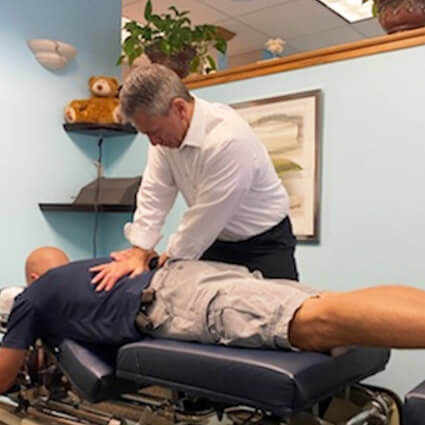Central Connecticut Chiropractic Techniques
 We use a number of highly-effective adjusting approaches to help improve spinal biomechanics and reduce nervous system interference. The approach we use is based on a variety of factors to numerous to describe here.
We use a number of highly-effective adjusting approaches to help improve spinal biomechanics and reduce nervous system interference. The approach we use is based on a variety of factors to numerous to describe here.
The primary adjusting techniques we use include:
Gonstead
Back in the 1960s, word spread throughout the world that there was a chiropractor in Wisconsin helping people of all ages, and walks of life, with a wide variety of health problems. We use the approach he developed in our office.
CBP®
Clinical Biomechanics of Posture® helps produce optimal posture and spinal alignment. As your spine assumes a more competent relationship with gravity, symptoms diminish and health can return.
Read more about Clinical Biomechanics of Posture® »
Thompson
Thompson Terminal Point technique is both a system of chiropractic analysis and a way to minimise the amount of energy needed to adjust the spine.
Palmer Package
The Palmer Package is a variety of techniques taught at the Palmer College of Chiropractic in Davenport, Iowa, the birthplace of chiropractic in 1895.
Read more about Palmer Package»
SOT
SOT stands for Sacro Occipital Technique, a chiropractic technique designed to help normalise the relationship between the pelvis and the head.
 Webster Breech Turning Technique
Webster Breech Turning Technique
“The baby’s turned!”
As the due date draws near, most babies have assumed a head-down position in the mother’s uterus. If the baby hasn’t turned, there is a greater chance of a more difficult breech birth or risky Caesarean intervention.
The late Larry Webster, D.C., developed a chiropractic technique that releases stress on the pregnant woman’s pelvis, relaxing the uterus and surrounding ligaments and permitting the baby to turn naturally.
Sacral subluxation causes the tightening and twisting of pelvic muscles and ligaments, constraining the uterus. These tense muscles and ligaments prevent the baby from comfortably assuming the vertex position. The Webster Technique reduces interference to the nervous system, improves pelvic balance and allows the baby to assume the optimal position for birth.
The July/August 2002 issue of the Journal of Manipulative and Physiological Therapeutics reports that 82% of chiropractors using the Webster Technique reported success.
“By using the Webster Technique the baby can turn in just one adjustment,” smiles Dr. DiRubba. “But usually it takes between three to 10 visits over a several week period.”
Because the Webster Technique relies on the inborn intelligence of the mother and baby, there is little risk. Correcting pelvic imbalances and reducing tension in the uterus gives the baby the room it needs to turn.
“If you, or someone you love, is facing a breech birth, urge them to consult our office for a natural approach,” says Dr. DiRubba.
If you’ve been to a chiropractor before and have a preference about how you are adjusted, let us know. We want you to relax, enjoy and fully benefit from your adjustments.
CONTACT US »
